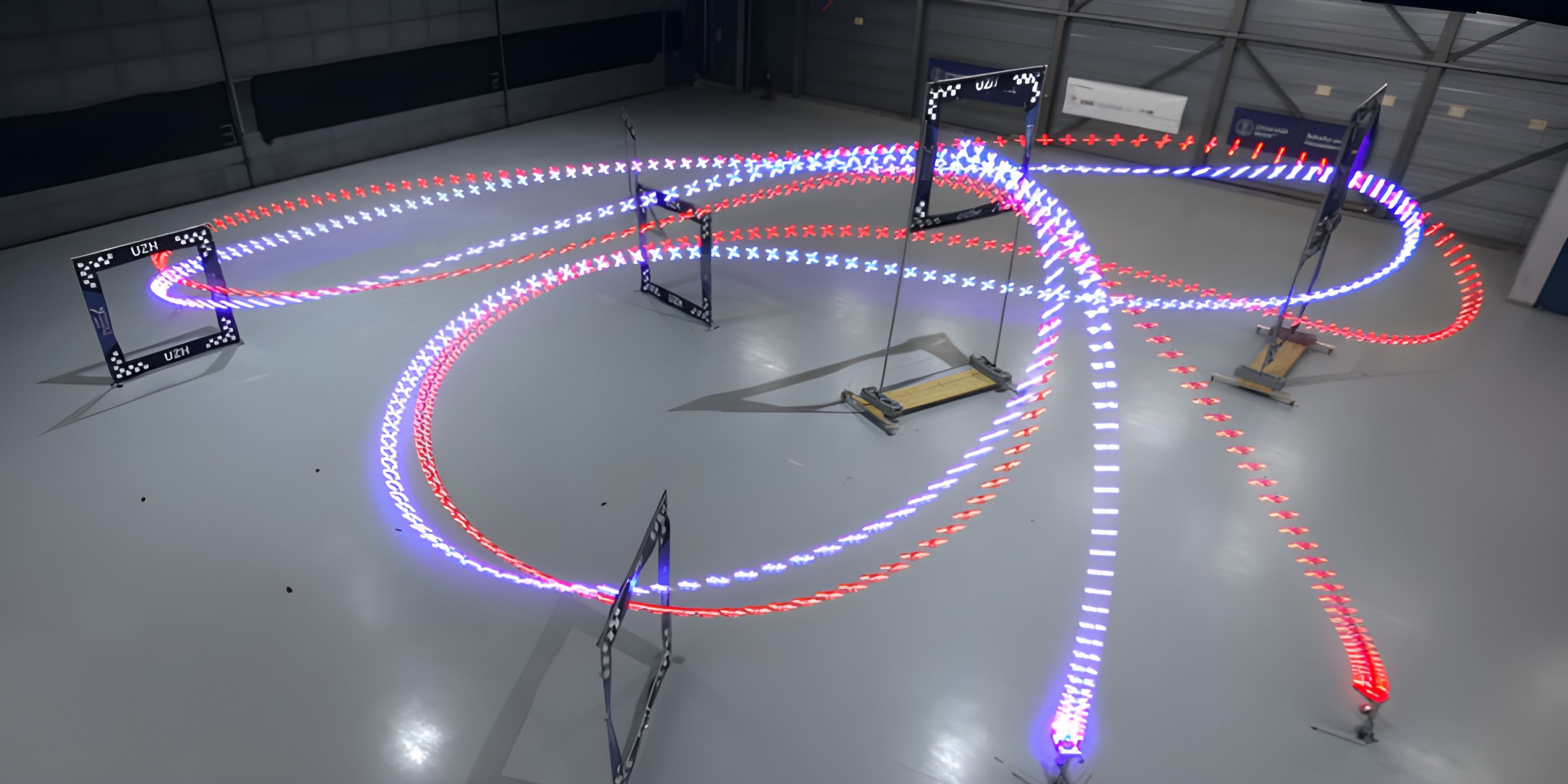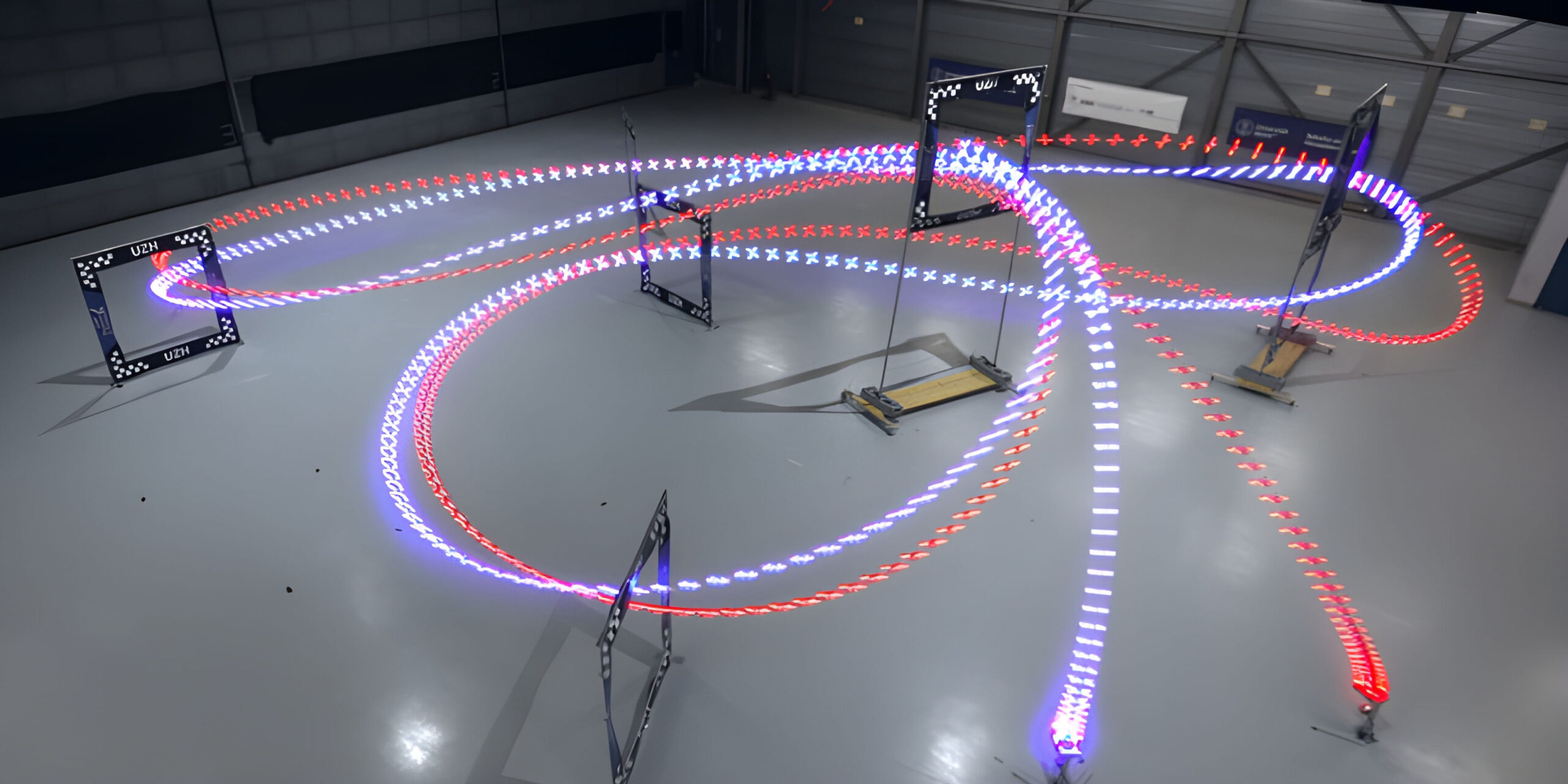
In an unprecedented achievement, an AI-powered drone named Swift, developed jointly by the University of Zürich (UZH) and Intel, has defeated human champions in first-person view (FPV) drone racing. This accomplishment is a milestone in AI’s progress, marking the first occasion where artificial intelligence has outpaced human skill in a physical sporting contest.
FPV drone racing is a thrilling sport where competitors control high-speed drones through complex obstacle courses. Pilots, wearing headsets, remotely control the drones while viewing a live video feed from the drone’s onboard camera, offering an immersive first-person perspective. Swift’s success in this challenging environment is noteworthy.
Historically, UZH had been on the pursuit of crafting an autonomous drone, but they heavily relied on motion-capture systems. The breakthrough came with Swift, which combines machine vision with real-time data capture through an onboard camera, mirroring the setups human racers use. Adding to its suite of features, Swift boasts an integrated inertial measurement unit gauging the drone’s speed and acceleration. All this information feeds into an artificial neural network that computes the drone’s location in real-time and discerns race gates. Furthermore, a deep neural network-based control unit determines the optimal racing path, ensuring Swift completes circuits rapidly.
Training Swift was no small feat. Reinforcement learning was employed in a simulated environment, enabling the system to evolve through a process of trial and error.
The ultimate test took place between June 5 and June 13, 2022. Swift faced off against renowned human pilots, including the 2019 champions from the Drone Racing League and MultiGP Drone Racing, Alex Vanover and Thomas Bitmatta, respectively, as well as the three-time Swiss victor, Marvin Schaepper. The competitive arena spanned 25-by-25-meters, replete with seven gates and intricate maneuvers, one being the adrenaline-packed “Split-S”.
Swift’s performance was impeccable, consistently outpacing human competitors and even registering the fastest lap time. But it’s not infallible; the AI faced challenges in adaptability, particularly when lighting conditions deviated from its training conditions. Thus, while AI showcases remarkable advancements, human pilots remain unparalleled in adaptability.
Led by researchers Elia Kaufmann, Leonard Bauersfeld, and Antonio Loquercio, among others, the team’s findings are featured in Nature under “Champion-level drone racing using deep reinforcement learning.”
Davide Scaramuzza, the spearhead of UZH’s Robotics and Perception Group, envisions Swift’s technology being crucial in various sectors. From forest surveillance and space missions to Hollywood’s action-packed sequences, Swift’s speed could redefine drone usage, especially in time-sensitive tasks like search-and-rescue missions.
This innovation has certainly made waves in the tech community. A consultant on Hackernews lauded UZH’s progress, predicting the challenging future human racers face against such advanced AI.
.thumbnailWrapper
width:6.62rem !important;
.alsoReadTitleImage
min-width: 81px !important;
min-height: 81px !important;
.alsoReadMainTitleText
font-size: 14px !important;
line-height: 20px !important;
.alsoReadHeadText
font-size: 24px !important;
line-height: 20px !important;








![Read more about the article [Funding Alert] Credenc raises $25M from Capital India](https://blog.digitalsevaa.com/wp-content/uploads/2021/07/Image861u-1626682106787-300x150.jpg)


![Read more about the article [Techie Tuesday] From coding for Adobe’s Dreamweaver to building ecommerce platform Jumbotail, the journey of Ramesh Kumar Katreddi](https://blog.digitalsevaa.com/wp-content/uploads/2022/03/CopyofImageswithserieslogos-1647272131776-300x150.jpeg)